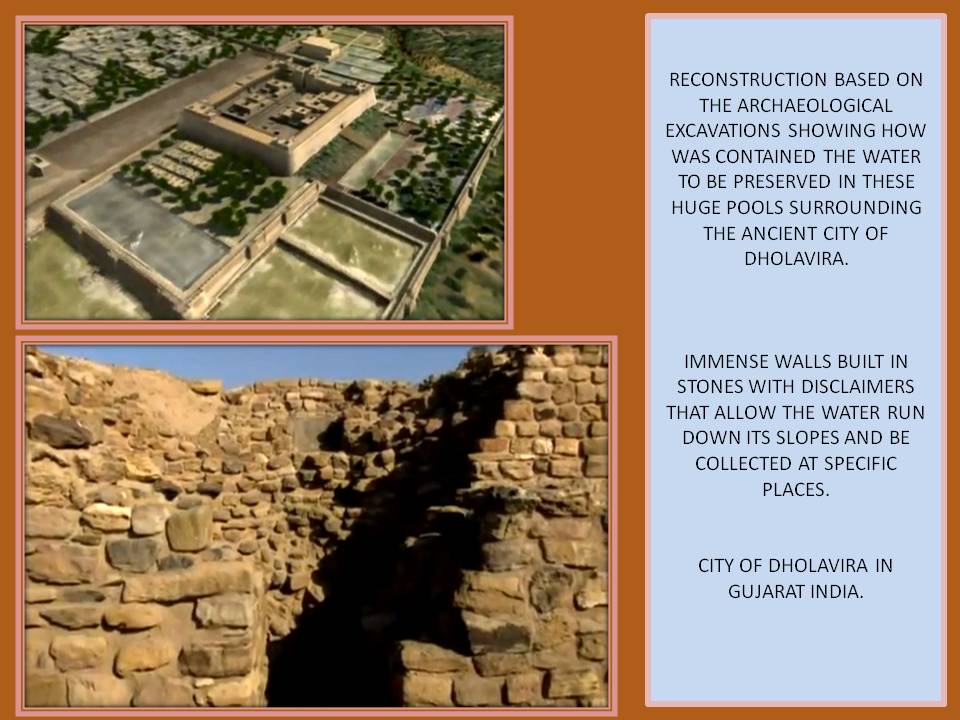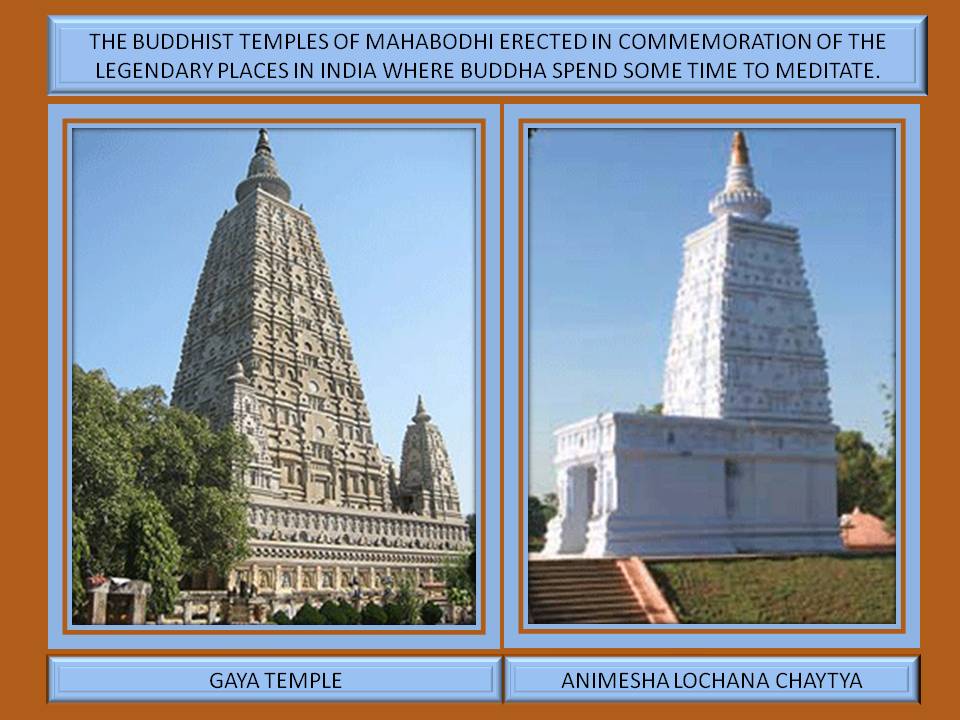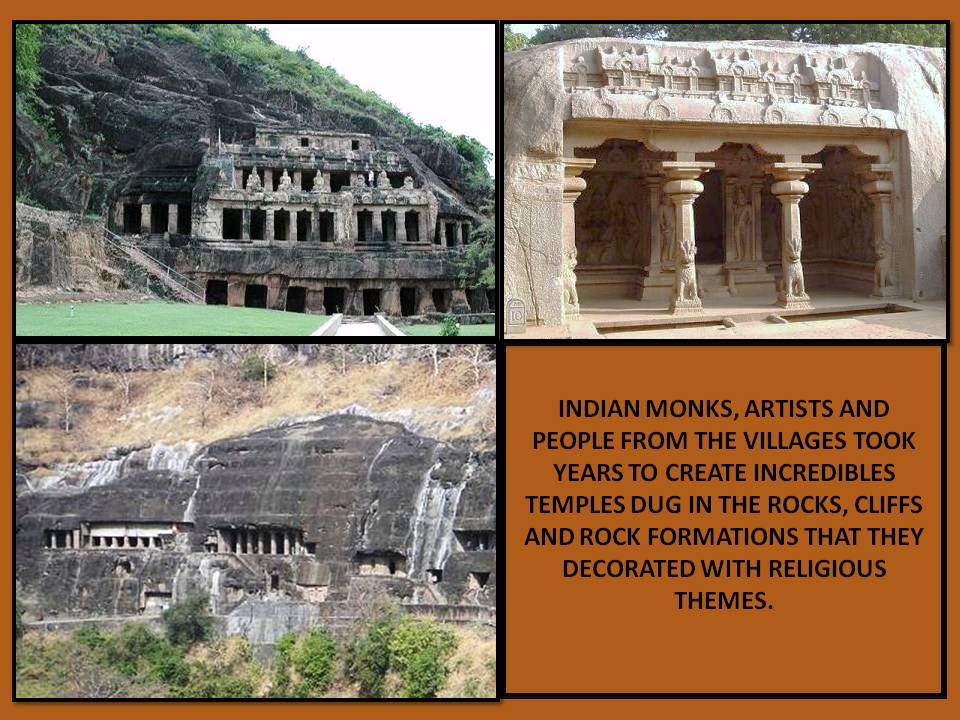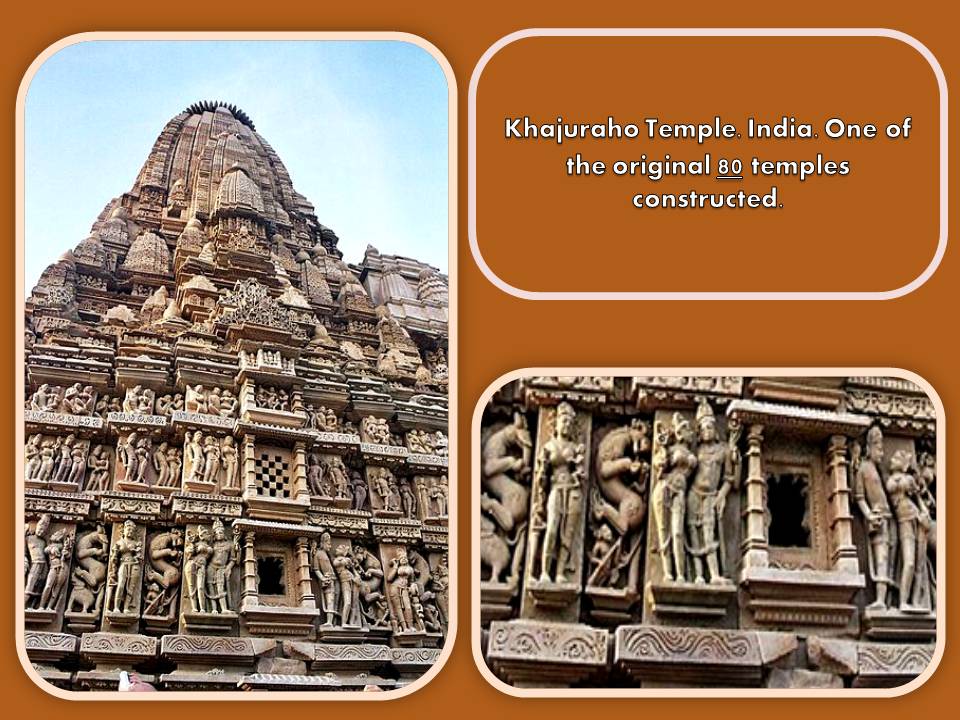Architecture of India
Prehistoric stages in Indi’s architecture.
Regarding the architecture of India it is important to begin by mentioning the excavations that archaeologist John Marshall carried out in Mohenjo-Daro and Harappa in 1920; because they contributed to a better understanding of this culture of the River Indus who came to build urban sites surprisingly well planned for that time and that had even sewer system.
In the area where the Deccan Plateau extends over the largest part of the South-Central territory of the Indian subcontinent have been found megalithic type grave’s (architectural constructions made with large blocks of stone barely trimmed) that correspond to the Mesolithic period.
Also corresponding to this architecture period are several megalithic monuments highlighting the dolmens type among them (several slabs wedged into the ground in a vertical position with a slab as a cover leaning on them in a horizontal position).
These architectonic structures were made using terracotta and brick. However despite all the excavations carried out by archaeologists has not been possible to find traces or vestiges of temples or palaces in these ruins found in Mohenjo – Daro and Harappa. If such type of buildings had been made they were not preserved. Remains have been found however of some vaults constructed of brick which denotes the advanced constructive perfection system employed which also include the walls that protected the Citadel or acropolis.
Public buildings are located on a set of terraces drawn and aligned in parallel streets following a regular symmetry-based structured plan. These buildings include:
-Baths or hot springs.
-lectures room type (athletic cultural and social center that did not require much space)
-cloisters rooms stances (some sort of quadrangular arcaded Gallery with arches resting on columns on all four sides).
-Water wells. It is also known of the existence of individual water wells for each house located on the back of them.
-Aqueducts (ramifications of narrow canals with ceramic pipes leading the wasted waters outside the city.
Other locations where have been also found by archaeologists remains of civilizations in India dating back to ancient times are:
-Sindhi.
-Lothal.
-Dholavira (Gujarat).
-Kalibangus.
Have been found also amazing structures built of stone whose depth measured from the surface to the bottom is of great magnitude. This water collecting walls allowed the former inhabitants gather water during the monsoon floods. These structures were planned in such a way that different levels directed water to the places that looks like some sort of pools for use in periods of drought. The city of Dhalavira has revealed in excavations for years the ingenious architectonic structure of the city conceived taking into account the need to keep water in so hostile climate.
Buddhist temples in India
The wooden shrines built by the Buddhist monks were deteriorating rapidly destroying themselves in a very short time, it can be said that for this reason they were considered as temporary sanctuaries, very in tune with the characteristic of the pilgrimage of the Buddhist doctrine whose monks traveled from one side to another giving teachings and helping the needy.
But this doctrine began to require places of meditation and temples of worship that will last and protect them from the weather, by which the caves provided a good haven, away from the hustle and bustle and enduring for more say, so what better than transform them to the needs of its doctrine?, after all they did have the best constructive force needed to tackle such an empress; the faith that move many faithful to carry out tasks that required huge efforts and time, but everything was possible if the purpose was to build a temple to pay homage to Buddha and spread his teachings.
Buddhism made excavation of caves an architectural important category, as from this moment the cave shrines become the most characteristic spaces. It can be said that the art of the excavated temples is in Indian traditional architecture the peculiarity that distinguishes it from other cultures.
From the 3rd century BC and until the fifth century after Christ, the naturally formed caves and also the excavated were very important, constituting this temples of laborious dedication a shelter from adverse weather conditions and insects for Buddhist monks while they could gather together when they needed it in an atmosphere of silence for meditation and strong enough to last for a long time.
They have helped us to know today the structure of the non-religious buildings in ancient times by the fact of having taken the form of the first construction of sacral buildings made in wood; and transpolar in detail is characteristics to the stone. The technique of excavation used denotes a broad knowledge of the stone characteristics, geography and topography of the places where they were made.
Buddhist temples main structures characteristics.
Chaityas: “Chitya”, which means ash: (Hall of prayer in the Buddhist temples).
Viharas: meeting place used as housing, dining room, library, classroom, workshop, etc.; it is the room in square shape of the monks who care for the temple and are dispose to accommodate them during the rainy season. They are the large central stance with the monks’ rooms surround it.
The Buddhist Stupas
They were mud mounds in the shape of domes containing inside the relics (body parts remains as for example the teeth, belonging to Buddha and other important monks) the Stupas were part of religious buildings. The Maurya emperor Ashoka; converted to Buddhism in the year 260 C. conceived it as a . Memorial cosmic symbol of the Paranirvana of Buddha.
These Stupas were classified in:
• SARIKA STUPA.
• PARIBHOJIKA STUPA.
• UDDESHIKA STUPA.
The architecture of the Jain temples
The construction of monasteries and often spectacular sacred venues (as shown in the image of the interior of the Vimala Vasahi Jaina temple at Mount Abu), show how the influence of different cultures as time goes by resulted in a particular architectural style where curiously temples and religious activities have rooms dedicated to libraries and to the study of the teachings and even have clinics to serve animals who for this religion are of utmost importance. For Jain religion, the universe is full of individual souls, there are many that have had the misfortune of falling captive and are forced to live on Earth sometimes as men or animals and deserve all the respect and care.
These temples have very presented therefore respect for animals and nature in general, which is a main characteristic inherent to the religious and philosophical aspect that spread Jainism. As in the case of other religions in India as well who also have this precepts in high consideration. The geography and climate; as well as social factors in each region counted with distinctive architectural elements outlined these Jain temples in the places where they were built.
Hinduism’ temples architecture.
The architectural style of construction of the Hindu Temple in general was conformed as was also done in other religions, varied in accordance with climatic, geographic, ethnic, racial diversity, history and linguistics in which they developed. In a country with such vast territories and so much diversity these aspects simply cannot be ignore.
The first built temples are directly related to the rise of Hinduism during the Gupta period where they began to build temples in stone which were not destroyed over time as it did with the firsts Buddhist’ wood temples.
The oldest temples that we find standing still today, is built around the 5th century A.D. and is destined for the Hindu cult; and no doubt reflect the power, strength and perpetuity the Gupta wanted to their religion. It’s a formidable effort to provide a safe and enduring building where to offer worship and respect to their gods. The blocks that make up the structure of the temple are worked almost to perfection in the same quarry, contributing to the artistic quality of the classical Gupta period.
These first temples are still small and poor decorated and are the ancestors of the colossal temples rajputs and Dravidian of the later Hindu India. Draw attention the concentration of forms and economics of elements that do not result in detrimental to the quality or durability of the building. They already reflect the concept of Hindu, totally different from the Buddhist pilgrimage Temple’s. This new religious form starts to raise to a higher category all those popular cults that Buddhism had been abolished; by channeling them through devotional novel presentation that can be called now as neobrahamanismo.
The Hindu Temple is conceived as a dwelling place of God on earth, and any volume or decorative element is depending on their spiritual nature rather than some others like utility or even aesthetic. The temple at Deogarh dedicated to Vishnu, along with the contemporaries of Sanchi, Ter, Chezarla and Aihole, constitute the first constructions in stone of India.
Spatial structure inside the Hindu Temple is formed by:
-The lobby.
-The Prayer Hall.
-The Chapel of the God.
They concede great importance to the progression of light ranging from the one that comes from the outdoor porch to the dark room of the Holy chamber inside; as well as taking into account the gradation in heights of the covers that goes from the lower height of the porch, to the highest (sikara) on the Holy chamber. They reflect the concept of Hinduism sacredness which stipulates that the most sacredness places in the temple has to be darkness and greater in height.
Dravidian Architecture of India.
In what constitutes the southern triangle of the Hindustan peninsula, developed the more purely Hindu Indian style, Dravidian, from which we have received genuine works of art from the VII century d. C. The main type of these temples has a square plant from whose ritual centre all architectural elements are diffused.
The cover with a pyramidal shape, allows to reach any height by simple multiplication of the number of floors in a staggered way, they end with an architectural element known as stupika (referring to the celestial Vault), recalling in its form to a huge fungus. These staggered roofs can reach spectacular heights, solving the problems of the verticality of the structure based on small buttresses to reinforce it, repeating the shape of the stupika as well as the vaults known as kudu as necessary.
This temples stratified appearance evokes a mountainous appearance, can be seen much better from the height and appreciate the perfect combination of geometric shapes that conform a Mandala. The temple achieves that come together harmoniously the rigorous rules and commandment of earthly ritual with the cosmological features.
If you look from the architectural point of view, this constructive harmony has its advantages, because this formula can take any measure (on ground or raised) by a simple multiplication of horizontal or vertical elements. The tendency to multiply the floors in Dravidian covers denotes the conception of religious and philosophical believe behind it where the floors are reflecting the multiplicity of names of the God who is worships in the temple.
The analysis of the Dravidian temples’ plant presents a labyrinth called “Mandala” that power cosmic energy of God. These architectural ensembles have the walls decorated with alternating pilasters and figures in high relief, representing the God in different postures. Examples of important Dravidian temples are the five structures called Rathas in Mahabalipuram.
Located in Tamil Nadu, the Brihadisvara Temple in Thanjavur was constructed by the great Raja Raja Chola ruler of the Chola dynasty in the tenth century A.D. He commissioned this work to achieve personal good Karma, according to their belief their successful reincarnation depend on the magnitude of the offers; in this case this magnificent example of the architecture of the Dravidian temple that was left for posterity which is erected by his personal diligence.
India architecture in the Mughal period.
Architecture in this period summarizes and mixes together the artistic forms of construction coming from the prolific Islam culture with the one existing in India, creating a very ornate and exuberant style that represents the vitality of the Mughal Empire. Its splendor is seen irrefutable in buildings in Fatehpur Sikri, which was capital of Akbar for a time, near the Agra region.
This resulting fusion of architecture styles, combining Islamic elements as it is the case of the vaults, bows, ruffles and minarets, the use of marble, either in tablets or in mosaics, the frequent use of courtyards, whose use was indispensable in the dynamics of these buildings, along with constructive strength, the use of smooth stone and the Indian ornamental decoration.
From this period of boom of Mughal architecture is the incomparable Palace of the Taj Mahal, which was built by the fifth Emperor Mughal, Shah Jahan in memory of his second wife Mumtaz Mahal, a Persian Princess whose husband loved deeply and who died giving birth to their son number fourteen, a girl.
This Palace of great beauty and majestic presence has been a monument to the love through time and a symbol of the pomp and quality of India architecture. It was designed by Iranian architect Istad Usa. The construction of the beautiful mausoleum began in 1631 and took 22 years to complete.
This magnificent building which has been declared world heritage is visited by millions of people every year.
The next post will be about the textiles in India important artistic expression that became a demanded and appreciated industry for them.













